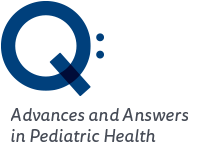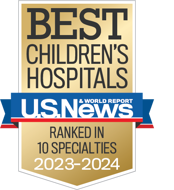- Doctors & Departments
-
Conditions & Advice
- Overview
- Conditions and Symptoms
- Symptom Checker
- Parent Resources
- The Connection Journey
- Calm A Crying Baby
- Sports Articles
- Dosage Tables
- Baby Guide
-
Your Visit
- Overview
- Prepare for Your Visit
- Your Overnight Stay
- Send a Cheer Card
- Family and Patient Resources
- Patient Cost Estimate
- Insurance and Financial Resources
- Online Bill Pay
- Medical Records
- Policies and Procedures
- We Ask Because We Care
Click to find the locations nearest youFind locations by region
See all locations -
Community
- Overview
- Addressing the Youth Mental Health Crisis
- Calendar of Events
- Child Health Advocacy
- Community Health
- Community Partners
- Corporate Relations
- Global Health
- Patient Advocacy
- Patient Stories
- Pediatric Affiliations
- Support Children’s Colorado
- Specialty Outreach Clinics
Your Support Matters
Upcoming Events
Colorado Hospitals Substance Exposed Newborn Quality Improvement Collaborative CHoSEN Conference (Hybrid)
Monday, April 29, 2024The CHoSEN Collaborative is an effort to increase consistency in...
-
Research & Innovation
- Overview
- Pediatric Clinical Trials
- Q: Pediatric Health Advances
- Discoveries and Milestones
- Training and Internships
- Academic Affiliation
- Investigator Resources
- Funding Opportunities
- Center For Innovation
- Support Our Research
- Research Areas

It starts with a Q:
For the latest cutting-edge research, innovative collaborations and remarkable discoveries in child health, read stories from across all our areas of study in Q: Advances and Answers in Pediatric Health.


Colorectal and Urogenital Care
Hirschsprung Disease
We see more, treat more and heal more kids than any other hospital in the region.

What is Hirschsprung disease?
Hirschsprung disease is a congenital defect, meaning that a person is born with it. This defect most commonly affects the lower part of the large intestine, also called the colon. Babies that are born with Hirschsprung disease do not have ganglion cells in certain portions of the intestine, which are the nerve cells in the rectum and colon that regulate bowel movements. The absence of these cells is called aganglionosis.
When a baby has Hirschsprung disease, they can't poop. This inability to poop is very uncomfortable for the baby and can cause their abdomen to expand and swell, which is known as abdominal distension. A blocked or obstructed colon can also lead to vomiting and inflammation of the colon, called colitis. If the problem is not addressed, this can cause infections and eventually lead to death.
Hirschsprung disease can vary widely between patients, and the severity of the disease often depends on how much of the colon is affected by aganglionosis. To treat Hirschsprung disease, the affected part of the colon must be removed through surgery.
What causes Hirschsprung disease in babies?
Hirschsprung disease is the result of a disorder that starts when the baby is still developing inside the mother's womb. This disorder affects the enteric nervous system, which controls the function of the gastrointestinal tract from the esophagus to the anus. The enteric nervous system helps swallowed food move into your stomach, where it is broken down and digested, then through your small and large intestine, and eventually out of your body as stool.
During the development of a baby with Hirschsprung disease, the large intestine does not fully develop, and the nerve cells that usually form on the intestine do not form. The reason for this is unknown. Without these cells, the colon cannot pass the stool and it begins to build up.
Who gets Hirschsprung disease?
Hirschsprung disease affects about 1 in every 5,000 newborns. The disease can be genetic, meaning that it can be passed down from a parent or relative. Hirschsprung disease is four times more common in boys than it is in girls.
What are the signs and symptoms of Hirschsprung disease in babies and kids?
One of the first signs that a newborn baby may have Hirschsprung disease is that their first bowel movement is delayed by more than 24 hours. When a baby is born, they typically poop within the first 24 hours. If it takes longer – especially longer than 48 hours – this may be a sign that their colon is blocked.
Not having normal bowel movements can cause a wide range of complications, including abdominal distension, fever, vomiting, dehydration and colitis. This range of symptoms can make diagnosing Hirschsprung disease more difficult.
What tests are used to diagnose Hirschsprung disease?
If a baby displays the signs and symptoms of Hirschsprung disease, doctors will perform the following tests to reach a diagnosis:
- X-ray of the abdomen and colon: In Hirschsprung disease, the part of the intestine that is missing ganglion cells will appear shrunken and the area above will appear bloated, as it is most likely backed up with digested food and stool.
- Rectal biopsy: Doctors will take a small sample of the rectum and examine it under a microscope to confirm the absence of ganglion cells. The absence of these nerve cells is a sign of Hirschsprung disease.
- X-ray with contrast enema: Doctors will take another X-ray adding a contrast enema with liquid such as iodine to produce a more detailed version of the image. This detailed image will help the surgeon decide what type of operation will be best for treatment.
At Children's Hospital Colorado, our team has extensive experience testing babies and children for Hirschsprung disease. We use the most advanced technology available to ensure we produce accurate test results in the least disruptive way possible.
What to expect from Hirschsprung disease testing
Rectal biopsy for Hirschsprung disease
The rectal biopsy for a baby less than 3 months old uses a modern device specifically designed for newborns. This is a painless procedure in which doctors take a small tissue sample of the rectum and examine it under a microscope. If the patient is older than 3 months, we will perform the procedure using anesthesia to help control pain. Test results are usually available within 48 hours.
X-ray with contrast enema for Hirschsprung disease
Our radiologists will perform the contrast enema together with our child life team, a group of medical professionals who help ease the stress and anxiety of medical procedures for kids. The contrast enema for Hirschsprung disease takes about 20 minutes. We will explain the results with parents that same day.
How is Hirschsprung disease treated?
While the exact procedures may vary for each patient, surgery for Hirschsprung disease typically includes four steps:
- Clearing the initial obstruction in the colon or rectum to relieve pressure and allow stool and gas to pass through.
- Removing the aganglionic section (area missing ganglion cells) of the colon.
- Connecting the healthy part of the colon to the rectum to establish a way to pass stool.
- Closing the incision.
Steps 2 and 3 make up what is called the "pull-through procedure." This operation, or some variation of this technique, is the most common surgical procedure used to treat Hirschsprung disease.
Why choose us for treatment of Hirschsprung disease?
At Children's Colorado, our International Center for Colorectal and Urogenital Care is among the best in the world. Our colorectal surgeons have extensive experience diagnosing and treating babies and children with this rare and lifelong condition. In fact, our pediatric colorectal surgeon, Luis De La Torre, MD, in 1998 pioneered a technique using a transanal approach, which is now used around the world to treat Hirschsprung disease. This pull-through technique is known as the "De La Torre pull-through."
Our caregivers are among the most renowned and experienced surgeons focusing on Hirschsprung disease today. Their extensive experience has come after more than 1,500 operations on patients with widely ranging forms of Hirschsprung disease. Children's Colorado continues to pioneer treatment for this disease and other colorectal conditions.
In addition to having the foremost experts in colorectal surgery, we use the most advanced technology available. By combining specialized expertise with the newest machines and equipment, we are able to offer the best treatment and care for every patient.
Hirschsprung disease can cause severe constipation and inflammation, so your child may need rectal irrigations to help them pass stool. Watch the video below to learn the steps and equipment required to perform rectal irrigation for children with Hirschsprung disease.
To learn more about Hirschsprung disease, we recommend the following resources:
- The National Organization for Rare Disorders (NORD): A nonprofit patient advocacy organization dedicated to individuals with rare diseases and the organizations that serve them
- The Pull-Thru Network: A volunteer-based nonprofit organization dedicated to providing support and education to families and others affected with congenital anorectal, colorectal and urogenital disorders and any other associated diagnosis
- Colorectal Support Network: A closed group on Facebook made up of parents and patients with congenital colorectal conditions that offer support to each other
Next steps
-
Would you like to learn more about us?
Learn more about the International Center for Colorectal and Urogenital Care Department -
Do you have questions about your child’s condition?
720-777-9880

Stories
Everett
Everett’s first surgery for Hirschsprung disease in California caused as many problems as it solved. After his parents found our colorectal experts, everything changed and he now has the health and freedom to be a kid.



 720-777-0123
720-777-0123





